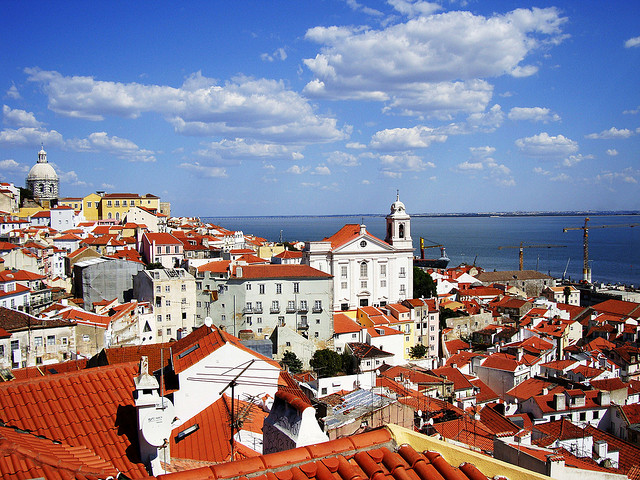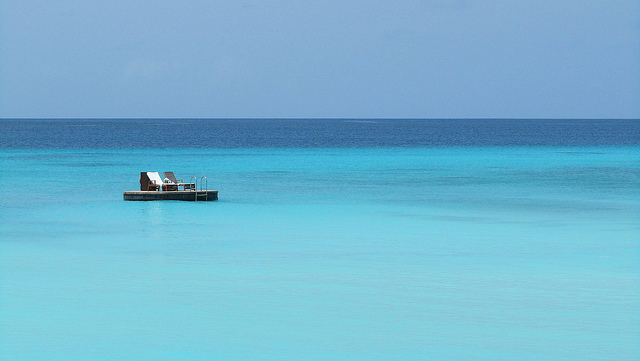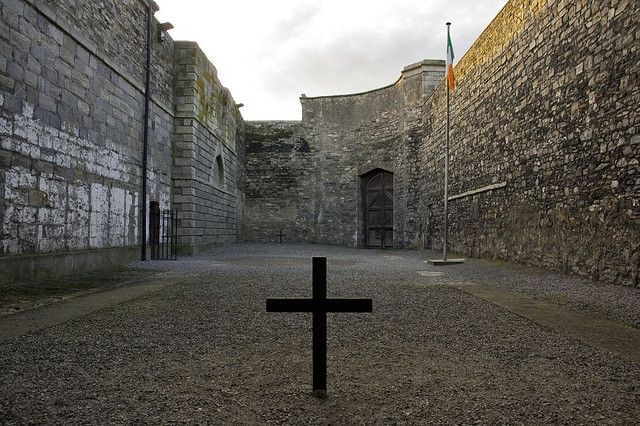Tag Archives: History
Top Tourist Attractions In Portugal
The top tourist attractions in Portugal are unique to the country even though it shares the Iberian Peninsula with Spain. It owes its unique identity to its geographical and cultural separation from its Spanish speaking neighbor. While Portugal might not be the richest country in Western Europe, it has is a rich land with lively cities and plenty of attractions to see an enjoy.
1. Cristo Rei
This Christ the King statue is the country’s most iconic landmark. The Portuguese had it built to give thanks because their country was spared from harm in the second World War. Cristo Rei resembles the world-renowned Christ the Redeemer Statue in Brazil. Situated in Lisbon, Portugal’s capital and largest city. It hasn’t moved an inch since its completion in 1969.
2. National Museum of Ancient Art
The museum of Ancient Art has the most expansive collection of Portuguese art from before the 19th century. Like Cristo Rei, you can find it in Lisbon. Included in its displays are a variety of artworks including sculptures, drawings, and paintings. The oldest collections in the National Museum of Ancient Art are from the Middle Ages. Works of famous artists such as Cristovao de Figueiredo, Francisco de Holanda, and Garcia Fernandes are part of the impressive exhibits.
3. Algarve
The Algarve is a region located in the most southern part of the country and is home to some of the most amazing beaches Portugal has to offer. The Algarve is one of the top tourist attractions in Portugal with more than 10 million tourists coming to visit every year, with a high percentage of British notably escaping the winters back at home. There are many beautiful coastal towns to choose the perfect accommodation and you can stay in everything from hostels to 5-star hotels. For a unique experience, check out Villa Plus, they’ve got a large list of amazing villas to enjoy with your better half or the entire family.
4. Monsanto Forest Park
Home to pleasant countryside, there is no better place to see natural beauty than in Monsanto Forest Park. It has more greenery than anywhere else in Portugal. The area contained by the park used to suffer from reduced wildlife until the government deemed it a protected area. Today, it has an ecological park, a thriving flora, and a recovering population of animals.
5. Berardo Collection Museum
The Berardo Collection Museum opened its doors to the public in 2007 in Lisbon. Unlike the National Museum of Ancient Art, it displays modern artwork. There are more than a thousand individual pieces currently on display. And with more than 2.6 million tourists visiting every year, Berardo Collection is one of the world’s most visited museums.
Works by famous artists like Pablo Picaso, Jackson Pollack, Salvador Dali, and Andy Warhol are part of its exhibits. Berardo Collection Museum is definitely one of the top tourist attractions in Portugal not to miss if you’re an art lover.
Gorgeous Grande-Terre: Must Do’s for Every Day-tripper
Grande-Terre Island is the name given to the eastern half of Guadeloupe Island (with the other half known as Basse-Terre). It is the home of most of Guadeloupe’s tourist resorts and farmlands, due to its beautiful land and coastline. If you you’re only visiting Grande-Terre Island for a day trip however, what attractions can you see to keep busy?
Aquarium de la Guadeloupe
For people that want to spend the day relaxing and enjoying marine life, Aquarium de la Guadeloupe is an excellent choice. With its variety of marine life, visitors can enjoy seeing everything from crabs to sharks. Daily snorkelling tours are also available, so visitors can experience the beauty of marine life first-hand, with a biologist and diving instructor.
Ft. Fleur D’épee
If you want to take full advantage of all inclusive long haul holidays, visiting the fortress in Bas-du-Fort is a must. Built between 1759 and 1763, the fortress can be found on the hillside behind a deep moat. The fortress is well-known for its battles between the French and English in 1794, and visitors can learn everything they need to about the battles and fortress history through guided tours.
Musée Camelia Costumes et Traditions
If you want to see a true labour of love, you must take the time to visit the Musée Camelia Costumes et Traditions. The private collection, owned by a retired English teacher named Camelia Bausivoir, includes examples of the dress of different societies through the ages. You can see baptism outfits, madras headdresses, colonial pith helmets, and much more.
Cathédrale de St-Pierre et St-Paul
For tourists that enjoy visiting religious sites, Cathédrale de St-Pierre et St-Paul is a must. Built in 1807, the cathedral has Creole-style balconies and stained windows that give it a dramatic effect. Since it was battered by hurricanes, it is under renovation and supported by ribs and pillars.
Musée St-John Perse
If you have a strong love for French culture and literature, visiting the Musée St-John Perse is sure to please. The museum is dedicated to Alexis Léger (better known as Saint-John Perse), a famous poet. In fact, in 1960, he won the Nobel Prize for literature. Most of his best work was inspired by his love for Guadeloupe.
Le Gosier
Le Gosier is a popular place for many tourists due to its shops, nightclubs, rental car agencies, and its casino. Although it simply used to serve as a stopping place between Pointe-à-Pitre and Ste-Anne, it is now one of the most popular tourist attractions.
St-François
Aside from Gosier, St-François is another area fast growing in popularity with tourists. In fact, it is believed that St-François is quickly overtaking Gosier as being the most fashionable and luxurious resort area. The area includes hotels, restaurants, bars, shops, golfing, and a casino.
With so much to see and do in Grande-Terre, any tourist can enjoy a wonderful day trip.
Alex Norman loves living under the stars. An avid traveller, he loves to write about a variety of topics that revolve around the great outdoors.
The Maldives: what to expect in terms of culture
Postcard-perfect beaches, balmy weather, lush greenery – the Maldives is an archipelago that virtually everyone wants to visit. And that’s very conservative on my part, I think; I mean, if money was no object, who wouldn’t come here? Most of the time, all you hear about is its beaches and luxury hotels; its diverse culture, meanwhile, is rarely mentioned.
Today is the day that changes, however, as culture is going to be the focus of this post. If what you read inspires you and you decide to sort out the practical details of your holiday right away, such as finding a hotel, just do a Google search for the Maldives and plenty of info will pop up.
A glance at history
Any destination’s culture is largely shaped by its history, so when I tell you that the Maldives has a fascinating past under the rule of a number of countries and suffused in myth, you should recognise that now is the time to get excited.
The first thing to know is that the islands of the Maldives dot the trading route of the Indian Ocean – something that has meant that visitors from far and wide having been coming here both in the form of short stops and of settling for centuries on end. So, the country is no stranger to overseas influences, which have made their impact on the culture over the years.
Just to give you an idea of what influences are at play, the original settlers here belonged to the Buddhist faith, but the nation converted to Islam back in 1153. In 1558 the Portuguese invaded, before being forced out in 1573. The archipelago then became a protectorate of Great Britain in 1887, gaining independence in 1965. In 1972, the first-ever island resort was built – a real landmark when you think how important local tourism is now.
Language, arts and more
So, you now have a (very) broad outline of the Maldives’ history, which means it’s time to look more directly at what you’ll experience in terms of culture. We’ll begin by taking a quick look at things like language, which you’ll come into contact with as soon as you arrive.
The national tongue is Dhivehi, but you’ll find the dialect can vary depending on whereabouts you are. For instance, on the inhabited islands in the far south you’ll notice a distinctly different dialect from places like Male’ – something that’s often attributed to the former’s relative isolation.
If you go island hopping, expect to discern differences in people’s appearances from one atoll to the next. This is down to the Maldives’ trade route location, which saw peoples from places like Africa, Arabia and south Asia settle here.
So, it’s easy to see the country is something of a melting pot. What I like doing is exploring the local arts and picking out different slices of heritage – as well as seeing how these diverse elements come together to create something new.
For instance, head into a mosque and you’re likely to see intricate patterns on the wooden beams, which can be traced back to south-east Asian influences. In terms of music, keep your eyes (and ears!) peeled for the bodu-beru, which is like an African drum.
Go island hopping, meanwhile, and you’re likely to do so in a dhoni – a traditional Maldivian boat. Look closely, though, and you’ll see it looks very similar to an Arabian dhow.
Driving around Ireland’s history
If you think that a trip to Dublin Castle is where history begins and ends on a holiday to Ireland then think again. Those who decide to hire a car and explore a little further outside the city will find that there are a lot of historic sites of interest.
Kilmainham Gaol
Take Kilmainham Gaol for example. It is just a short three-and-a-half kilometre drive from Dublin and has plenty of secrets waiting to be unearthed. It was used as a prison up until the 1920s, but today is one of the biggest unoccupied jails anywhere in Europe.
This notorious site has seen some heroic and tragic events in its history and tells the story of a side of Ireland and how it became the nation it is today. Visitors can learn about the political prisoners who were once housed there and how the immense building has now been restored.
Farmleigh House and Estate
Located eight kilometres from the city centre in Phoenix Park is a grand mansion built by Arthur Guinness’ great grandson Edward Cecil Guinness, the first Earl of Iveagh. This eclectic mix of architectural styles is Farmleigh House, accompanied by its charming estate.
It was purchased by the Office of Public Works in 1999 and has since been used to accommodate dignitaries visiting from overseas. Artwork, furnishings and books collected by Guinness for Farmleigh are still present in the house, on loan from the family.
The Victorians and Edwardians, who both had an influence on the estate, had a penchant for ornamental features and the gardens surrounding the house reflect this. Lakeside walks, walled and sunken gardens, as well as an immense variety of plants will greet the visitor.
It is not simply a case of driving up to the house and having a look around, as it is still in use, but guided tours can be arranged in advance or upon arrival.
Rathfarnham Castle
More like a fortified country house than a castle, but still complete with impressive flanker towers, Rathfarnham Castle is an interesting place to visit. It is an easy drive away from Dublin, not far from the village of Rathfarnham.
Originally built in the Elizabethan period for Archbishop Adam Loftus, who was involved in the establishment of Trinity College, it was extensively remodelled towards the end of the 18th century. This process was undertaken with input from world-renowned architects of the day including Sir William Chambers and James ‘Athenian’ Stuart.
Enjoy finding out more about social history with a visit to the castle, which is home to the Berkley Costume and Toy Collection. The toys, dolls and clothes date back to the 18th and 19th centuries and were originally amassed by Countess Ann Griffin Bernstorff, an artist and collector.
The War Memorial Gardens
For those more interested in modern history a visit to the War Memorial Gardens on South Circular Road is a must. The formal planting reflects the sombre duty to remember the 49,400 Irish soldiers who were killed between 1914 and 1918 in the First World War.
Designed by Sir Edward Lutyens there is a sunken rose garden, herbaceous borders and avenues of trees, making it a beautiful as well as interesting place to visit. Granite book rooms have also been built on the site to house manuscripts containing the names of all those Irishmen who died.
These have been intricately illustrated by Harry Clarke and provide a poignant focal point to any visit.








 Welcome to Home Town Travel Guides.com , your source for travel guides written by locals and those who've been there and done that! ~Jeremy
Welcome to Home Town Travel Guides.com , your source for travel guides written by locals and those who've been there and done that! ~Jeremy